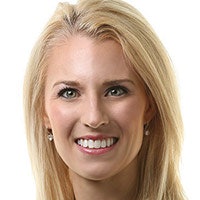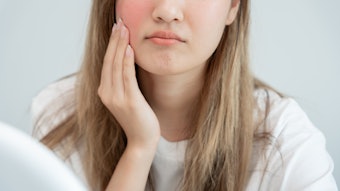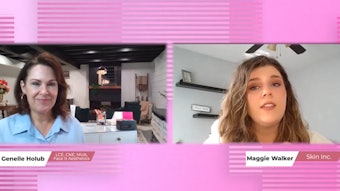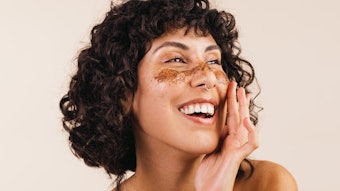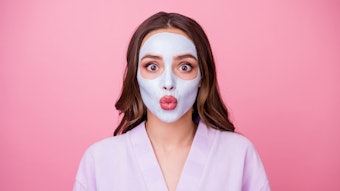
Skin on young children is so beautiful, youthful and vibrant and, as an advanced esthetics educator, I hope to instill in my own children good skin care habits. So, as I sit here and ramble on about the beauty of youthful skin, I glance up and notice a lovely whitehead on my son’s adorable chin. But wait a minute—that can’t be! He’s only 10 years old; he shouldn’t be getting pimples until he’s a teenager, right?! Wrong.
Recent studies have documented and confirmed what many skin care professionals have long suspected: Puberty is beginning earlier and earlier in today’s children. Puberty brings about many changes in children and primary among them is acne. Preteen acne is on the rise in children ages 10–12, and sometimes in those even younger than that.
The jury is still out on why puberty is happening earlier in today’s society. Puberty depends on many things, including gender, nutrition and ethnicity. Girls usually begin puberty between the ages of 10–14; boys will begin between the ages of 12–16. However, it is no longer uncommon to see girls begin puberty as early as 8 years old, and boys as early as 10 years old.
Acne 101
Acne is a disorder of the sebaceous glands. These glands are regulated by the endocrine system and, more specifically, the androgens. During changes or spikes in hormones, such as during puberty, the sebaceous glands produce more oil. More oil production leads to a series of events that can result in open and closed comedones—blackheads and whiteheads—and possibly papules and pustules—red, raised bumps and pus-filled pimples.
There are four grades of acne, ranging from mild to severe. Grades 1 and 2 are generally noninflammatory and consist of smaller lesions, mostly open and closed comedones. Grades 3 and 4 are inflammatory with larger lesions, papules and pustules, which have a higher chance of scarring and tissue damage.
Preteen acne
The good news for preteens with acne is that it generally falls into the milder grades of acne with open and closed comedones mainly in the t-zone area of the face. Milder grades of acne can usually be controlled with proper skin care treatments and topical ingredients, such as benzoyl peroxide. However, if acne in a preteen is inflammatory and does not respond to treatment, a dermatologist will have to monitor it. The physician might perform a blood test to rule out any hormonal imbalances, and might prescribe an oral antibiotic or topical therapy.
Treatment of preteen acne. When working with younger clients, be sure to check with your state board and stay within your scope of practice. And yes, sometimes getting a clear answer from your state agency can be a challenge. I reached out to Alex Thiersch of Thiersch & Associates (www.thierschlaw.com) in Chicago, which specializes in legalities involving medical spas. He informed me that when estheticians perform facials, they may work only with the superficial layers of the skin and, because of this, facials are not considered medical procedures. Therefore, there would be no minimum age requirement for a client. With this being said, a facial would be an appropriate treatment for preteen clients. However, it is still imperative to always have the parent or legal guardian of the preteen complete a client questionnaire and sign a consent form for the minor.
A main component of preteen facials is education, and children will be curious. Remember to explain what you are doing and why. This will not only make them more comfortable, but it will also educate them on a sound home-care regimen. Stick with the basics: cleansing, exfoliation, extractions, massage (optional) and a mask. (See Treatment How-to: Preteen Acne Facial.) Don’t forget, when dealing with acne due to hormones, balancing the skin should be the main goal, along with keeping it free from impurities and buildup of dead skin cells.
Extractions and exfoliation
Human skin is so amazing. It is in constant renewal. For adults, this cell turnover process takes approximately 28 days; however, for younger children, it can be faster than that. One goal in the treatment of acne is to always keep the skin fresh at the top. In order to keep it fresh, a mild exfoliation is recommended. For the treatment room, a mild scrub, facial brush or light enzymatic mask is beneficial.
Extractions are not always necessary and should be performed with caution. If you feel extractions are necessary, limit the time spent on them and only extract what is ready to come out. Stay within your scope of practice and remember: Gentle pressure is all that is needed!
Make sure you emphasize to your young clients the importance of keeping their hands away from their face, and that picking at acne can lead to tissue damage and scarring. Remind them that you are a professional who uses professional products, and extractions should be left up to professionals!
Marketing
If you already have a current clientele of parents with preteen children, it is a good idea for your facility to offer a specialized facial for this age group. Marketing it as a mini facial—30 minutes in length—will appeal not only to parents, but to the active preteenager, as well. Setting an appropriate price point is key to help ensure bookings. You may want to consider including a take-home product in your price. This will be beneficial to your clients, while also helping establish a home-care routine and encouraging future sales.
To drum up future bookings, consider offering to present an educational session about skin care and acne at local junior high schools, and then ask if you can reinforce this message to the school’s parent’s club. Make sure that your local area is aware that your spa addresses these types of concerns.
Home-care routine
Facials are excellent for preteens; however, the right home-care routine is essential to help balance their skin. Remember: These are children, so be sure to keep home-care regimens simple, yet effective. Try to recommend the basics, and avoid using too many aggressive ingredients that can be overdrying and dehydrating, which can lead to another set of problems. See Preteen Home Care Routine for recommendations on what works best for preteen skin.
As a skin care professional, you do not want to miss an opportunity to work with this age group. It is a privilege to be able to educate and enhance the lives of younger clients, especially during this very confusing time of their development.
GENERAL REFERENCES
www.aad.org/stories-and-news/news-releases/acne-comes-of-age-earlier
www.nlm.nih.gov/medlineplus/puberty.html
(Accessed Sep 3, 2014)
